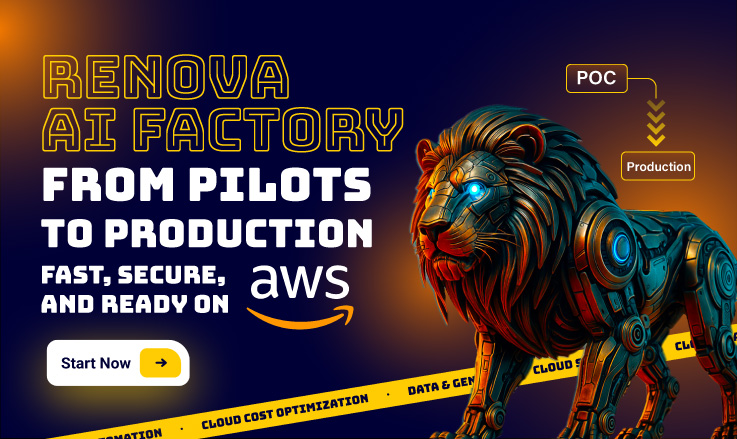
What are AWS Monitoring Services?
Table of Contents
or any business using Amazon Web Services (AWS) for its agility and scalability, understanding what are AWS monitoring services is the first step toward effective cloud management. These services provide the essential tools to track the performance, health, and security of your applications and infrastructure. This constant oversight is far more than a technical chore; it’s a fundamental business practice for ensuring reliability, controlling costs, and maintaining security.
What is AWS Monitoring?
AWS monitoring is the process of continuously observing your Amazon Web Services resources and the applications you run on them. It involves collecting and analyzing data to gain a deep understanding of your system’s health and performance. Think of it as a comprehensive health check for your cloud environment. By tracking key metrics like CPU utilization, network traffic, and application response times, you can proactively identify and resolve issues before they impact your users.
Effective AWS monitoring provides a holistic view of your entire technology stack, from the underlying infrastructure to the end-user experience. This visibility is vital for troubleshooting problems, optimizing resource allocation, and making informed decisions about your cloud strategy. Ultimately, a well-implemented monitoring strategy ensures that your AWS environment is reliable, performant, and cost-effective.
What are AWS Monitoring Services?
AWS monitoring services are a suite of tools designed to provide deep visibility into the performance, health, and security of your cloud applications and infrastructure. These services automatically collect and process data in the form of logs, metrics, and events, giving you a comprehensive view of your operational state.
The cornerstone service is Amazon CloudWatch, which tracks resource utilization, collects logs, and allows you to set alarms based on specific performance thresholds. For governance and security auditing, AWS CloudTrail records all user activity and API calls made within your account. Other key services include AWS X-Ray for analyzing and debugging distributed applications and AWS Config for tracking changes to your resource configurations.
By leveraging these tools together, businesses can proactively identify and resolve issues, optimize resource costs, strengthen their security posture, and ensure the overall reliability and performance of their AWS environment, turning raw operational data into actionable insights.
Why is AWS Monitoring So Important?
Good monitoring isn’t just a technical task for your IT team; it’s a smart business practice. Having a solid monitoring strategy in place brings real benefits that positively affect your operations, security, and budget. Let’s look at some of the main advantages.
Better Performance
One of the first things you’ll notice with good monitoring is that your applications and systems simply run better. Monitoring tools help you find performance slowdowns as they happen. By keeping an eye on things like application response times, database query speeds, and server CPU load, your teams can figure out exactly what’s causing a delay. This makes it much easier to tell if the problem is in the application code, the database, or the server setup itself.
Armed with this information, you can use your resources more efficiently. For instance, you might see that an application uses a lot of memory but not much processing power. This would allow you to switch it to a memory-focused EC2 instance, saving money while ensuring your users get a smooth, fast experience.
Stronger Security
When you use the cloud, security is a partnership. AWS secures the cloud itself, but you are responsible for securing what you put in it. Monitoring is your best tool for this job. A good monitoring system acts like a 24/7 security guard for your AWS environment, constantly watching for suspicious activity.
You can set up alerts for specific events that could signal a security issue, like someone trying to log in from an unusual location, multiple failed login attempts, or strange data transfers. Catching these things right away means your security team can investigate and handle the threat before it turns into a major problem.
Smarter Spending
Cloud bills can get complicated and grow without warning if you’re not paying attention. AWS monitoring gives you the detailed data needed to manage your cloud spending effectively. By tracking how all your services are being used, you can easily spot resources that are sitting idle or aren’t being used to their full potential, all while costing you money.
For example, you might find servers running at only 10% of their capacity, old storage volumes that are no longer attached to anything, or forgotten data buckets that are still racking up fees. Monitoring brings these issues to light, so you can downsize, delete, or even automate shutdowns for development environments after hours. This turns monitoring into a tool that directly helps your bottom line.
Quicker Problem Solving
When something breaks, the faster you can find and fix it, the better. Without monitoring, teams often have to guess what went wrong, which can lead to long outages and unhappy customers.
Effective monitoring drastically cuts down the time it takes to resolve an issue. Alerts can instantly notify the right person with helpful information the moment a problem starts. Dashboards and logs guide engineers straight to the root cause, whether it’s a software bug or a hardware issue. This ability to troubleshoot quickly means less downtime and helps maintain your customers’ trust.
Easier Regulatory Compliance
If your business is in an industry like finance or healthcare, you have to follow strict regulations. Proving that you are compliant with standards like GDPR or HIPAA requires keeping detailed records of everything that happens in your cloud environment.
A monitoring service like AWS CloudTrail creates a permanent, unchangeable record of every action taken in your account. It logs who did what, from where, and at what time. This audit trail is essential for compliance reports and investigations, making it simple to show auditors that your security rules are being followed.
More Informed Decisions
Beyond fixing immediate problems, the information you gather from monitoring can help you plan for the future. By looking at trends in how your resources are used over time, you can make smarter, data-backed decisions.
For instance, tracking your growth helps you plan for future capacity, so you can scale up smoothly without spending too much on resources you don’t need yet. You can also see which features of your application are most popular, giving your development team valuable feedback. This strategic approach helps ensure your technology choices support your business goals.
Native AWS Monitoring Tools
AWS provides a suite of native tools that you can use to monitor your environment. These tools are tightly integrated with the AWS platform and provide a wealth of information about your resources and applications.
Amazon CloudWatch
The primary monitoring service for collecting and tracking metrics, logs, and events from your AWS resources and applications in real-time. It provides customizable dashboards, alarms, and can automatically react to changes in your AWS environment.
AWS CloudTrail
A service that logs all API calls and related events in your AWS account. It provides an audit trail of who, what, and when actions were performed, helping with compliance, security analysis, and operational troubleshooting.
Amazon EventBridge
A serverless event bus service that connects applications with data from various sources, including AWS services. It enables you to build event-driven architectures that can automatically respond to events, such as application availability issues or resource changes.
Amazon GuardDuty
A threat detection service that continuously monitors for malicious activity and unauthorized behavior within your AWS accounts and workloads. It can send notifications to CloudWatch to trigger automated responses to detected threats.
VPC Flow Logs
A feature of Amazon Virtual Private Cloud (VPC) that captures information about IP traffic to and from network interfaces in your VPC, providing insights into network activity and potential issues.
AWS X-Ray
AWS X-Ray helps developers analyze and debug production, distributed applications, such as those built using a microservices architecture. With X-Ray, you can understand how your application and its underlying services are performing to identify and troubleshoot the root cause of performance issues and errors.
X-Ray provides an end-to-end view of requests as they travel through your application, and shows a map of your application’s underlying components. You can use X-Ray to see where your application is spending its time and to identify any bottlenecks.
Guidelines for Effective AWS Monitoring
Now that you have an understanding of the native AWS monitoring tools, let’s look at some guidelines for effective AWS monitoring.
Define Your Monitoring Goals
Before you start monitoring your AWS environment, it is important to define your monitoring goals. What are you trying to achieve with your monitoring? What are the important metrics and KPIs that you need to track?
Your monitoring goals should be aligned with your business objectives. For example, if your business is focused on providing a great user experience, then your monitoring goals should be focused on application performance and availability.
Monitor Everything
It is important to monitor all aspects of your AWS environment, from the underlying infrastructure to the end-user experience. This will give you a complete picture of the health and performance of your systems.
Don’t just focus on the obvious metrics, such as CPU and memory utilization. Also monitor things like network traffic, application response times, and error rates. The more data you collect, the better you will be able to understand your systems and troubleshoot issues.
Automate Everything
Automation is a great practice for effective AWS monitoring. You can automate the collection of metrics, the creation of alarms, and the response to events.
For example, you can use CloudWatch alarms to automatically trigger a scaling action when the CPU utilization of your EC2 instances exceeds a certain threshold. You can also use AWS Lambda to automate the response to security events.
Use the Right Tools
AWS provides a suite of native monitoring tools, but there are also many third-party tools available. The right tools for you will depend on your specific needs and requirements.
When choosing a monitoring tool, consider factors such as ease of use, scalability, and cost. You should also make sure that the tool is compatible with your existing systems and applications.
Let Renova Cloud Handle Your AWS Monitoring
Getting the most out of your AWS investment starts with a solid monitoring plan. As an AWS Advanced Consulting Partner, Renova Cloud has the expert team to help you build and manage a strategy that fits your exact needs.
Our certified experts use the best tools for the job, like Prometheus, Grafana, and the Elastic Stack, to give you a clear picture of your entire environment. We go beyond monitoring, too. Our team can also help with cloud migration, DevOps, and cloud cost optimization to make sure your business runs smoothly and can grow faster.
Ready to improve performance and get your cloud costs under control?
Contact Renova Cloud today for a free consultation. We can also schedule a demo of our AI-powered cost optimization platform to show you exactly where you can start saving.



